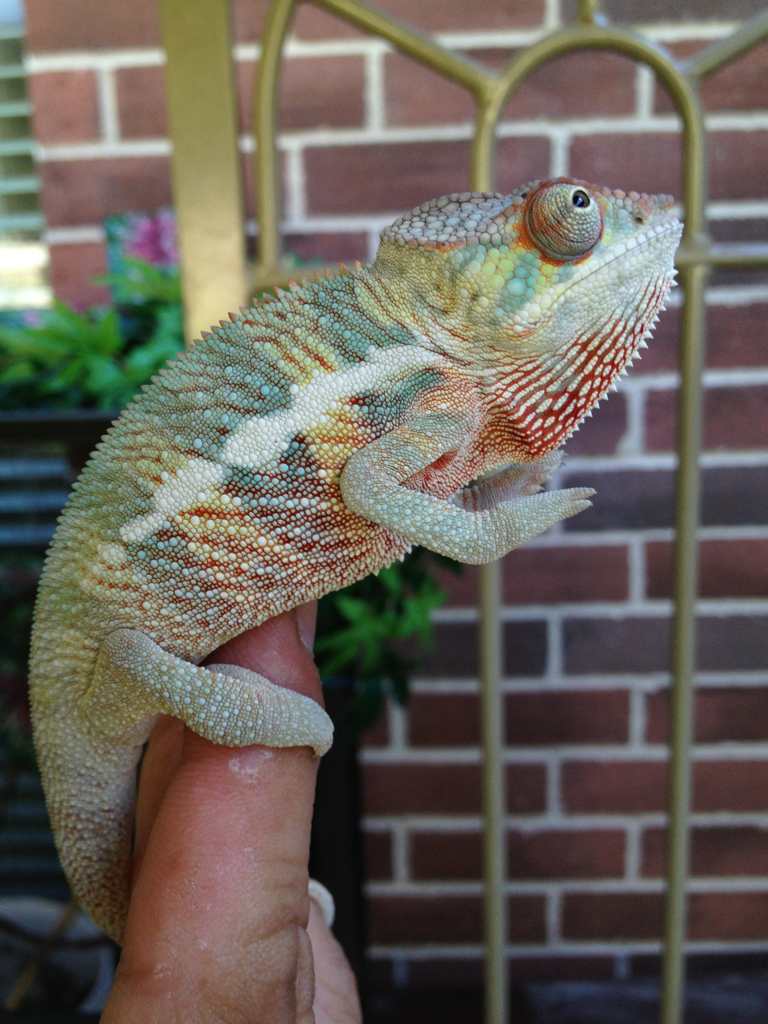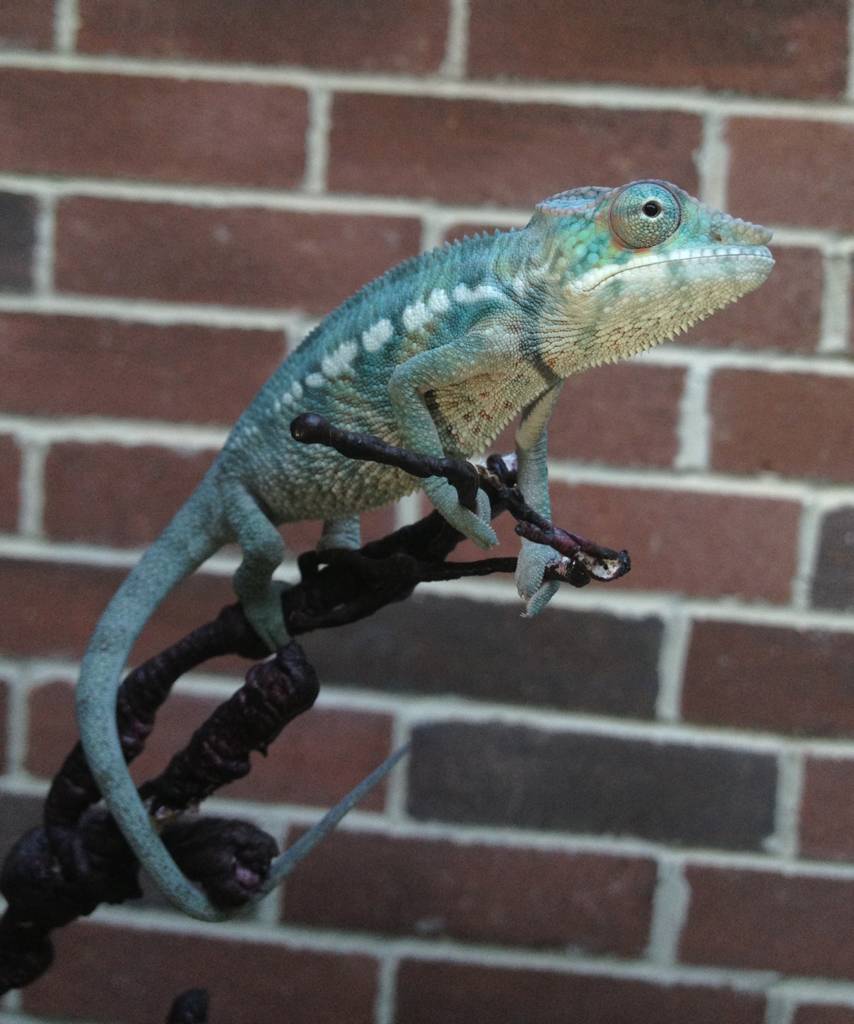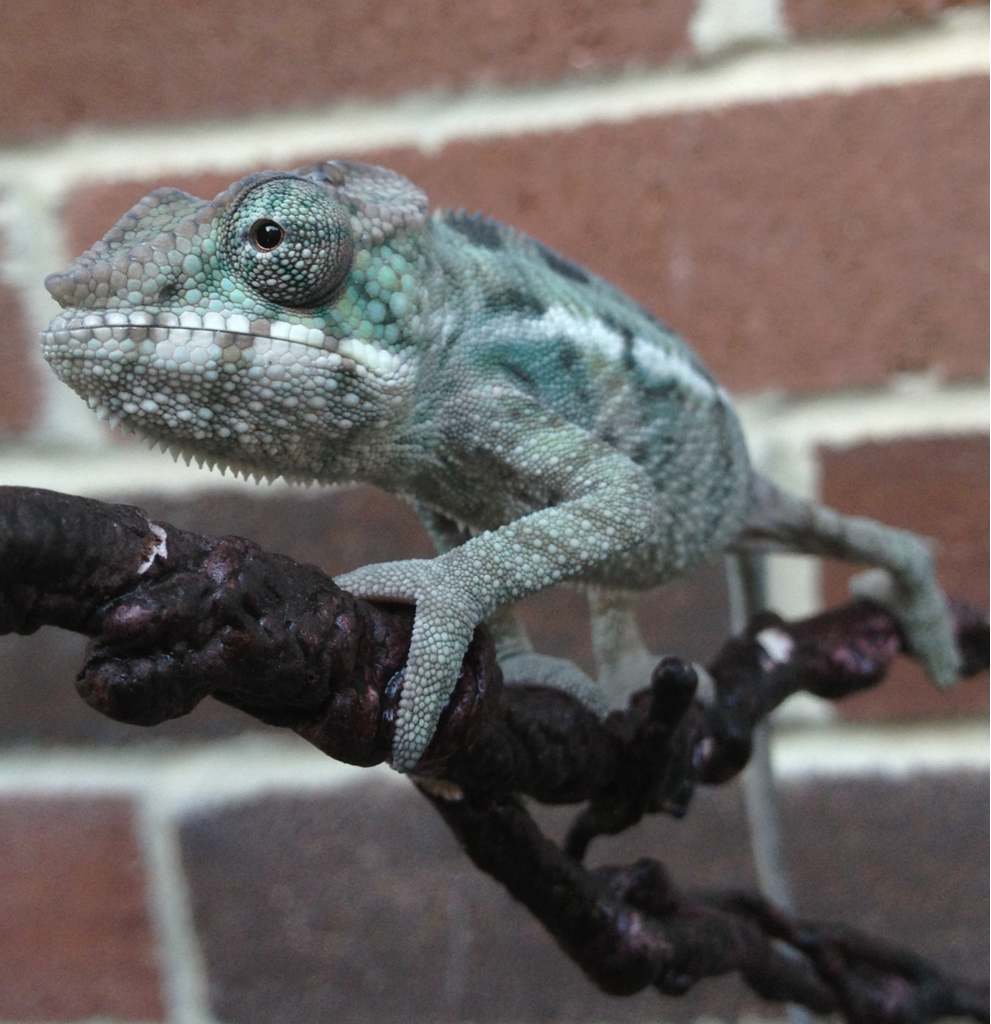Navigation
Install the app
How to install the app on iOS
Follow along with the video below to see how to install our site as a web app on your home screen.
Note: This feature may not be available in some browsers.
More options
You are using an out of date browser. It may not display this or other websites correctly.
You should upgrade or use an alternative browser.
You should upgrade or use an alternative browser.
Can you breed different panther locales?
- Thread starter phylicia
- Start date
Yep..One of our members has ambilobe/ nosybe's forsale. Some cross's are verry colorful and often sold for less money.My self I'm into keeping the locals pure.Somthing to keep in mind::At some point it's possable the chameleon exports could stop,I feel preserving the locals is the way to go.
deerharvester
Established Member
Yes of courses u can, and some of them make amazing colors. In Madagascar there is no fence In between locales stopping them from mating. Most keepers frown upon it, I like to see some of the one of a kind colors they can produce.
I would prefer to not mix them but theres no real reason to not do it. The chances we would one day release our collections into the wild to help populations is very slim. Even then it wouldnt be locale dependent as long as we release the actual species into the wild. Im sure locales like in these particular chameleons attained their different "look" just from being separated from the main populations for period of time with a nice amount of inbreeding within that separate population. Think of locales kinda like races of people
Olimpia
Biologist & Ecologist
The chances we would one day release our collections into the wild to help populations is very slim.
Not even slim, but downright impossible! Believe me, there is never going to be a day (ever) where the government of Madagascar comes knocking on our doors and says "We need you, we need your chameleons to repopulate the country." The animals that we keep in the private sector are considered completely unusable by anyone in ecology (just as animals like tigers kept privately by citizens are NEVER used in breeding programs once confiscated) so we're never going to contribute to any projects in the wild with our pets.
If we want to keep them separate for the sake of the pet trade, then that's a different story. But trust me, if there is ever a project to restore the panther populations (in the event they became endangered, because right now they're fine) no one is ever going to come and collect all our Pascals and Rangos for the cause.
TreeTopChameleons
Established Member
I absolutely agree Olimpia...People make a huge deal about crossing locales, and I believe it is a bit ridiculous. I personally am not interested in cross breeds, but only because I am more than happy with the locales available, and would rather keep them separate to enjoy all their subtle (and not so subtle) differences, rather than mixing them all together.
I think the most important thing you should be considering when crossing locales is the health of your chameleon, and also your ability to re-home a clutch of mixed babies, knowing that they are often not as in demand as the pure locale clutches.
At the end of the day, do what makes you happy.
I think the most important thing you should be considering when crossing locales is the health of your chameleon, and also your ability to re-home a clutch of mixed babies, knowing that they are often not as in demand as the pure locale clutches.
At the end of the day, do what makes you happy.
Olimpia
Biologist & Ecologist
Exactly, always more important to consider whether you think all the babies will end up in a good home, what happens when not all the little girls get a home, do I have the resources to raise and house several chameleons if they don't, etc.
When I was screening buyers for my clutch of crosses I actually had a tremendous amount of interest in the females (since I wasn't asking very much for any of the babies), and some individuals wanted to buy several girls, as many as 10. I became very suspicious because that to me sounded like they wanted cheap breeder females to then breed panthers (and probably sell them as pures) and decided instead of keep the girls myself. So there are dishonest people out there, breeding and selling crosses is one thing if they're going to homes that love them and respect what they are, but it's another if they end up going to dishonest homes who want to screw up the hobby to turn a profit.
When I was screening buyers for my clutch of crosses I actually had a tremendous amount of interest in the females (since I wasn't asking very much for any of the babies), and some individuals wanted to buy several girls, as many as 10. I became very suspicious because that to me sounded like they wanted cheap breeder females to then breed panthers (and probably sell them as pures) and decided instead of keep the girls myself. So there are dishonest people out there, breeding and selling crosses is one thing if they're going to homes that love them and respect what they are, but it's another if they end up going to dishonest homes who want to screw up the hobby to turn a profit.
sandrachameleon
Chameleon Enthusiast
Ive never had trouble selling cross-local panthers either, males or females. Most pet owners don't care what local the females are, since they all look much the same regardless of origins.
If the highly unlikely event that the wild population ever want to be repopulated from capture animal sources, it wouldn't be from hobbyists like us. They'd go to specialists, zoos, and such.
the "pure" animals in the hobby trade are sometimes not actually pure, and even the ones you could confirm as originating as pure often not really the same as in the wild - we breed for looks not for fitness. for example Most Nosy Be animals in the wild are NOT the solid bright blue so popular here. I dare say the Faly that get the most breeding will be from those that have a lot of white and red rain - not necessarily what would have survived the best in the wild
some people like the reliable look of particular locales. Some people like the unique surprise of a cross. There's certainly room for both in the hobby
these are ambi-nosy crosses, the first is the father of the second.


If the highly unlikely event that the wild population ever want to be repopulated from capture animal sources, it wouldn't be from hobbyists like us. They'd go to specialists, zoos, and such.
the "pure" animals in the hobby trade are sometimes not actually pure, and even the ones you could confirm as originating as pure often not really the same as in the wild - we breed for looks not for fitness. for example Most Nosy Be animals in the wild are NOT the solid bright blue so popular here. I dare say the Faly that get the most breeding will be from those that have a lot of white and red rain - not necessarily what would have survived the best in the wild
some people like the reliable look of particular locales. Some people like the unique surprise of a cross. There's certainly room for both in the hobby
these are ambi-nosy crosses, the first is the father of the second.


Last edited by a moderator:
JasonM
New Member
I know this is a old post, but I loved hearing this years ago, did a male panther say to the female panther what local or what does your father look like?Can you mate an Ambilobe Chameleon with a Nosey be Chameleon?
There are studies saying that Furcifer pardalis from different locals on Madagascar may actually be up to 11 different species.
I often wondered if there might be big enough genetic differences in the various locals of them to make crossbreeding of some of the locals unsuccessful or weak because a couple of times I had poor “quality” babies from some of the pairings I allowed…but I was just learning myself back then so I just quit breeding F. Pardalis to avoid issues with the babies.
The fact that we all have issues identifying the local if the females imported and bred in captivity also plays a part in whether the cross breeding is good or not IMHO.
There is still lots to learn about chameleons.
Oustalets and Parsons breedings also gave me something to think about too.
You might want to read these…
https://www.chameleonforums.com/threads/furcifer-pardalis-may-actually-be-multiple-species.141161/
https://reptilesmagazine.com/the-pa...5IRAWjGd1ZQzzhIwQg6EBNfrehhA18wcGL_5pift36urv
“An analysis of blood samples and photos of each individual suggest that instead of one species, the panther chameleon is actually 11 distinct species that live in separate populations. The photos below (copyright Michel Milinkovitch) show the 11 different chameleon species.”…
https://www.livescience.com/50983-photos-panther-chameleon-11-species.html
One more…
I often wondered if there might be big enough genetic differences in the various locals of them to make crossbreeding of some of the locals unsuccessful or weak because a couple of times I had poor “quality” babies from some of the pairings I allowed…but I was just learning myself back then so I just quit breeding F. Pardalis to avoid issues with the babies.
The fact that we all have issues identifying the local if the females imported and bred in captivity also plays a part in whether the cross breeding is good or not IMHO.
There is still lots to learn about chameleons.
Oustalets and Parsons breedings also gave me something to think about too.
You might want to read these…
https://www.chameleonforums.com/threads/furcifer-pardalis-may-actually-be-multiple-species.141161/
https://reptilesmagazine.com/the-pa...5IRAWjGd1ZQzzhIwQg6EBNfrehhA18wcGL_5pift36urv
“An analysis of blood samples and photos of each individual suggest that instead of one species, the panther chameleon is actually 11 distinct species that live in separate populations. The photos below (copyright Michel Milinkovitch) show the 11 different chameleon species.”…
https://www.livescience.com/50983-photos-panther-chameleon-11-species.html
One Chameleon, Eleven Chameleons: Genetics Reveal Cryptic Species in Madagascar's Panther Chameleon…
https://www.discovermagazine.com/pl...ptic-species-in-madagascars-panther-chameleonOne more…
Last edited:
Motherlode Chameleon
Chameleon Enthusiast
Cross breeding can happen with Furcifer pardalis locals. I have got video that shows what I think is a Nosy Be/Tamatave adult Furcifer pardalis cross. There are recent posts on Facebook about cross breeding of Furcifer pardalis with Furcifer oustaleti and the babies have grown to adult size. Plus there is some documentation for Furcifer pardalis breeding with Furcifer oustaleti here on the Chameleon Forums. This is a link to one of those threads.
https://www.chameleonforums.com/thr...her-snoop-born-4-20-2020.174735/#post-1561553
As far as genetics is concerned about the genus Furcifer that is to be decided in the Lab. I think both Furcifer pardalis and Furcifer oustaleti could turn out to be multiple species rather than just one species.
Best Regards
Jeremy A. Rich
https://www.chameleonforums.com/thr...her-snoop-born-4-20-2020.174735/#post-1561553
As far as genetics is concerned about the genus Furcifer that is to be decided in the Lab. I think both Furcifer pardalis and Furcifer oustaleti could turn out to be multiple species rather than just one species.
Best Regards
Jeremy A. Rich
Similar threads
- Replies
- 0
- Views
- 361








